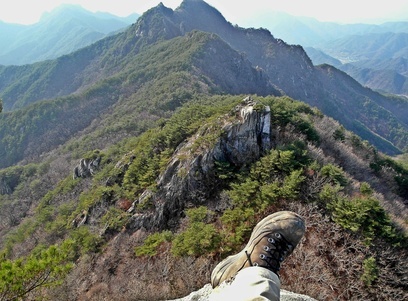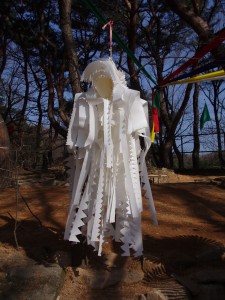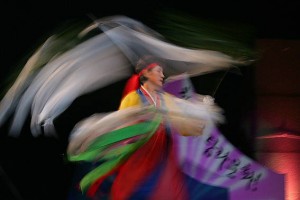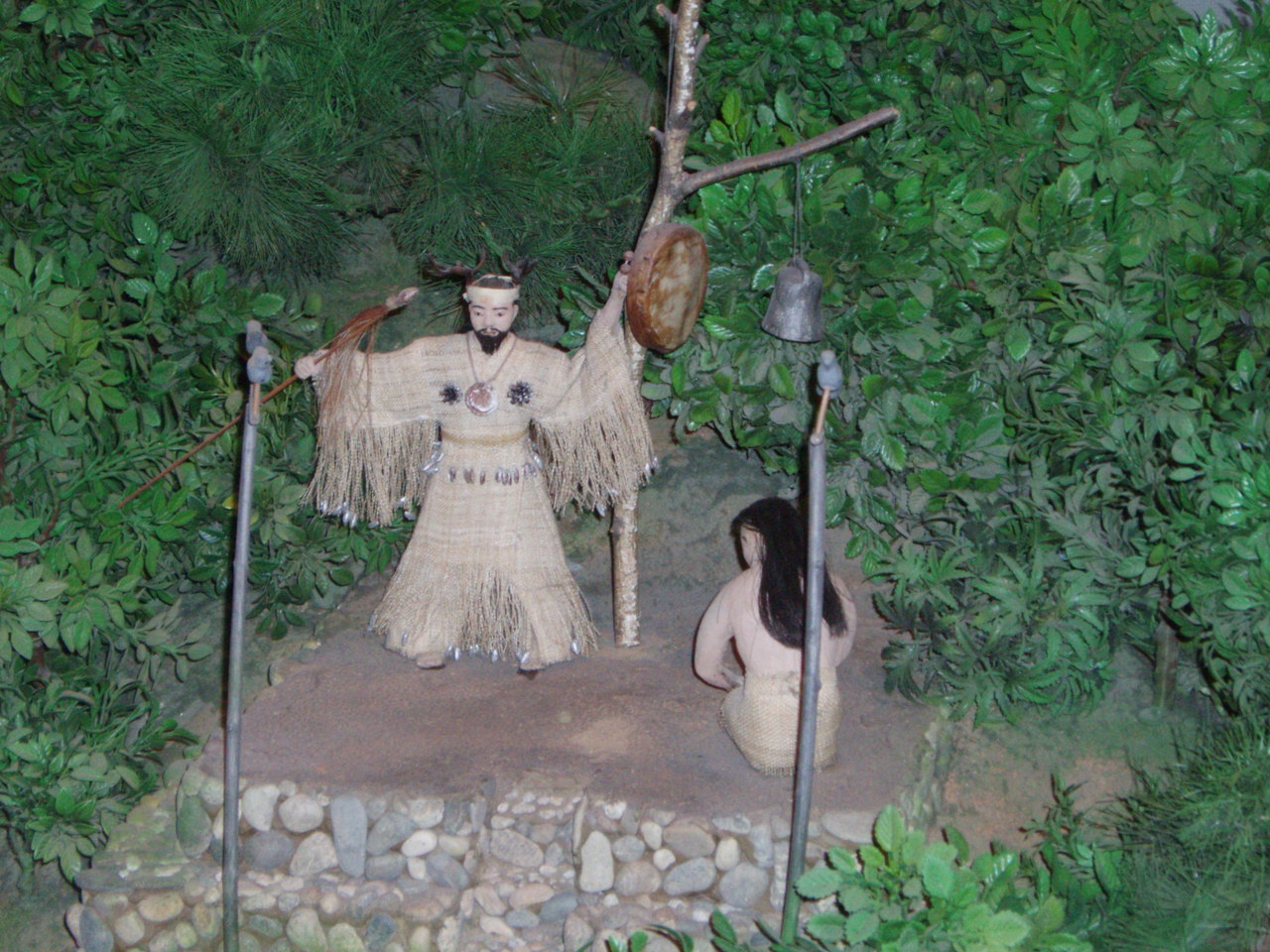
Udu-san in Korea, which legend claims to be where the gods descended (courtesy Douch)
Shamanism in Korea tends to be overshadowed by Buddhism, Confucianism and even Christianity. Though it flourished in ancient times, its influence waned after 1392 when the Joseon Dynasty promoted Confucianism. This was primarily concerned with ethical behaviour and promoting harmony in a top-down social order, which was at odds with the individualistic, spontaneous and unpredictable nature of shamanism. Moreover, it was male-oriented in contrast to the female world of shamanism.

Spirit clothes, used in Korean shaman ceremonies
During the colonial period after 1910 all folk religions had been forbidden, and after liberation the forces of modernisation and secularisation had proved further impediments. Yet remarkably shamanism still continues to play a part in the life of the people, like a stream that has been diverted underground but continues to water the fields.
‘You see, it’s basically like this,‘ Sanshin expert David Mason told me. ‘There was a kind of village shamanism all over East Asia. Regional variations, sure, but basically the same. There was a shaman-chief or shamanness in control or supporting the leader. In China it went philosophical with the emergence of Taoism. In Siberia it retained its village form but got wiped out by the communists. In Korea it merged with Buddhism and sort of got sidelined. And in Japan it was used to legitimise the ruling dynasty. That’s the way I see it, anyway. That’s why you have these differences all over East Asia, even though they all share the same basis.

Korean shaman dance in Jeju (unknown source)
For me Korea’s the most interesting because shamanism remained strong in folk culture but didn’t become institutionalised. It managed to co-exist with Buddhism but was suppressed by Confucianism under the Joseon Dynasty. During Japanese control it suffered even more as it was regarded as a potential source of nationalism. In the postwar period Christianity and Westernisation have contributed to the view that it was somehow evil or backward, and even as recently as the regime of Park Chung-Lee in the 1970s it was portrayed as an enemy of modernity. Throughout it’s been primarily a woman’s religion, and though it managed to remain vibrant it has always been marginalised or driven underground. That’s what makes it so interesting.’
‘Koreans are still Confucian on the inside with a shamanistic center,‘ writes Woo-Young Choi, professor of sociology at Chonbuk National University. His book ascribes Korea’s rapid economic growth to its Confucian heritage and brings up the concept of sinbaram, which has to do with inhalation in the sense of drawing in the breath. It’s the sort of breathing that takes a shaman into trance, and some say it’s the very basis of Korean culture. It’s where the energy and vitality of the country come from. You can sense it in the poetry, and it’s how the country survived being crushed between its mighty neighbours, China and Japan. It’s how it manages to keep breathing so heartily, even now.

Model of an ancient Korean shaman – did immigrants long ago bring their religion with them to Japan?

Leave a Reply